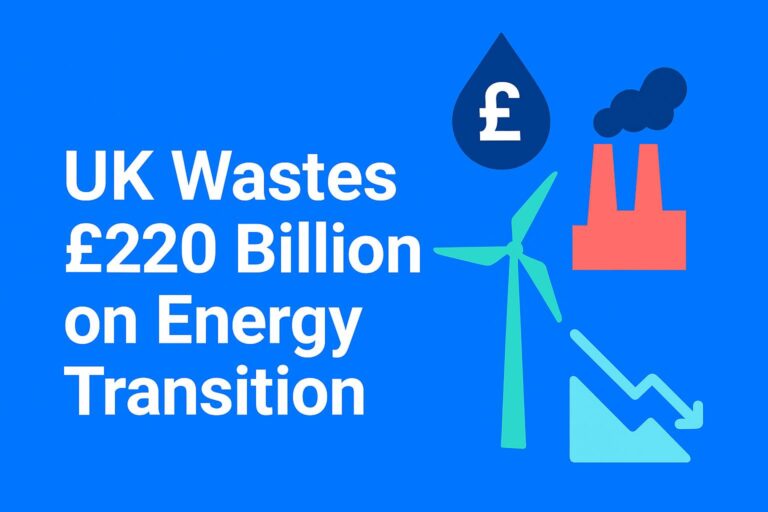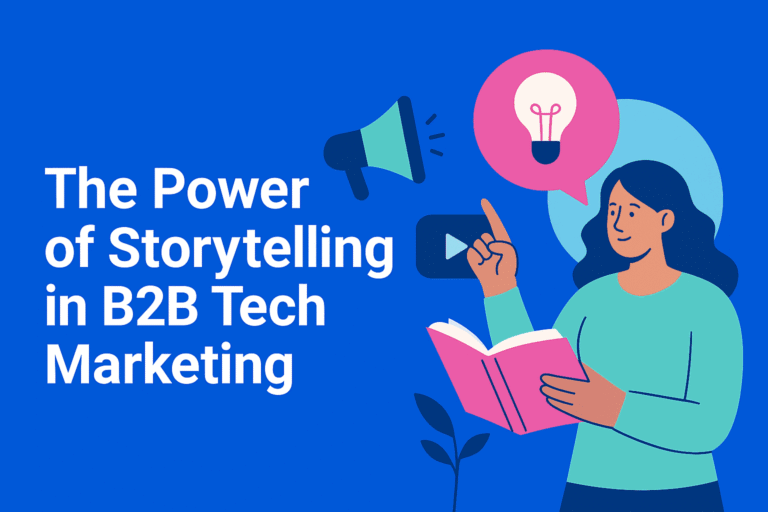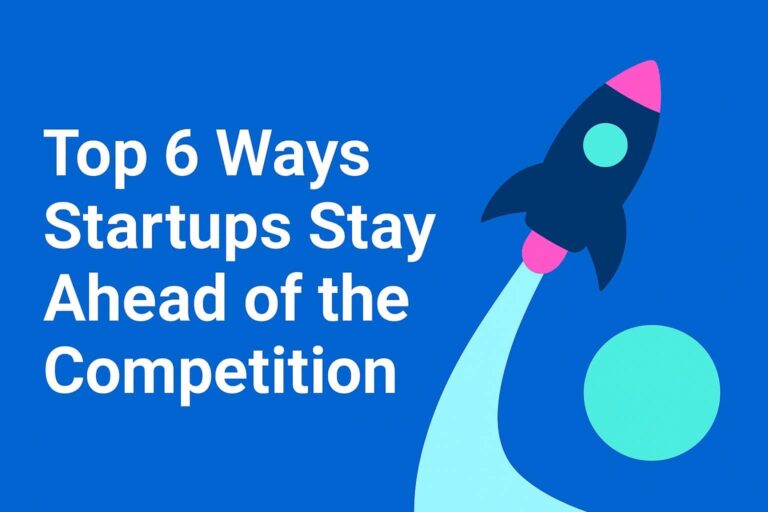Why Sales Enablement is Your Startup’s Secret Weapon…
We know having a brilliant product isn’t enough for your tech startup. Just like marketing, your sales team also needs the right tools, content, training and processes to effectively communicate value and close deals. Sales enablement is a strategic discipline that’s transforming how startups scale their revenue operations, but only 35% of firms have a formal sales enablement strategy. This could be hurting small B2B tech companies that focus on the wrong places and don’t invest sufficiently in their go-to-market operations.

What is Sales Enablement?
Sales enablement is the strategic process of providing your sales organisation with the resources, content, tools, knowledge and information they need to effectively engage buyers throughout the sales cycle. Although it includes the basics of creating sales collateral and conducting product training, it offers a far more comprehensive approach. It aligns marketing, sales and customer success to empower salespeople to have meaningful conversations with prospects and drive consistent, predictable revenue growth.
Think of sales enablement as the connective tissue between your product innovation and market success. It encompasses everything from onboarding programs and competitive battle cards to CRM systems, content management platforms and ongoing coaching frameworks. When executed effectively, sales enablement transforms your sales team from order-takers into trusted advisors who can articulate your value proposition, overcome objections and guide prospects through increasingly complex buying journeys.
The B2B Tech Startup Challenge
For tech startups, the sales enablement challenge is particularly acute. You’re likely operating with limited resources, rapidly evolving technology and intense pressure to demonstrate growth to investors. Your sales team may be small, wearing multiple hats and lacking the sophisticated infrastructure that enterprise competitors take for granted. Small tech firms are often disproportionately overinvested in their technical teams and product development, while being underinvested in marketing and sales. They keep rolling out new functionality or products, but if the go-to-market function is lacking, then the sales team cannot optimise the opportunity from any new developments to increase revenue. Things just get stuck in a perpetual cycle of new tech that nobody knows about and doesn’t benefit anyone.
The statistics paint a sobering picture of the current landscape. Most companies, including startups, are essentially winging it when it comes to empowering their sales teams. This ad-hoc approach has real consequences: 65% of sales reps report they can’t find relevant content to send to prospects, and 61% say the enablement content available is too generic to be useful. These gaps create a vicious cycle for startups. Without proper enablement, salespeople struggle to articulate your differentiation effectively, sales cycles elongate, win rates suffer and that crucial runway starts burning faster. Meanwhile, founders and marketing teams wonder why their meticulously crafted messaging isn’t translating into closed won deals.
Why Sales Enablement Matters
The good news? Sales enablement adoption has exploded by 343% in the past five years, signalling that forward-thinking companies recognise its strategic value. More importantly, the ROI is undeniable when you get it right. Companies that invest in dedicated sales enablement see a 49% win rate on forecasted deals, a massive competitive advantage in any market. Even more compelling, 84% of sales reps achieve their quotas when supported by proper sales enablement, compared to significantly lower attainment rates without it. For startups fighting to hit board-approved targets, these numbers should be impossible to ignore.
The productivity gains are equally impressive, with 76% of organisations reporting higher sales productivity with enablement tools, and sales enablement platforms can reduce onboarding time by 40%. When you’re scaling quickly and need new hires to contribute fast, cutting ramp-up time by nearly half can be transformative. In fact, effective enablement tools can improve sales rep ramp-up time by 25%, meaning your investment in new sales talent pays dividends sooner.
Beyond new hire productivity, proper enablement drives expansion revenue and customer retention, which are critical metrics for startups building sustainable, capital-efficient growth models. Effective enablement programs increase cross-sell revenue by 19%, while 52% of firms using sales enablement report improved customer retention. In the age of net dollar retention as a key SaaS metric, these improvements directly impact your company’s valuation multiple.
How to Build Your Sales Enablement Foundation:
So, what should tech startup founders and marketers do? Here’s a practical framework for building sales enablement that drives results without breaking the bank.
1. Start with Strategy, Not Tools
While the market is flooded with sales enablement platforms, resist the temptation to buy technology before establishing a strategy. Define what success looks like:
- What does your ideal sales process look like?
- What knowledge gaps do your reps have?
- What content do they need at each stage of the buyer’s journey?
Companies with robust enablement outperform others in quota attainment by 22%, but this performance gap comes from strategic alignment, not just tool implementation. Understand and map your buyer’s journey, identify the key decision criteria at each stage and work backward to determine what enablement assets will move deals forward.
2. Build a Centralised Content Repository
Address the content discovery crisis head-on. With 65% of salespeople unable to find relevant content, you’re likely wasting countless hours as reps recreate decks, search Slack channels or simply skip sending valuable resources altogether. Create a single source of truth for sales content, whether it’s a simple Notion database or a dedicated platform. Organise assets by buyer persona, use case, sales stage and objection type. Tag content with metadata that makes it searchable and discoverable. Most importantly, establish a governance process for keeping content current as your product and positioning evolve.
3. Personalise Your Enablement Content
Remember that 61% of reps find enablement content too generic? This is your opportunity to differentiate. Instead of one-size-fits-all slide decks, create modular content that salespeople can customise for specific industries, company sizes or use cases. Develop persona-specific talk tracks, industry-tailored case studies and role-based ROI calculators. The goal is to make it easier for reps to personalise their outreach than to send generic messages. This specificity directly impacts performance, and firms using real-time data in sales enablement see a 31% improvement in close rates because they can speak directly to a prospect’s needs rather than broadcasting generic value propositions.
4. Invest in Coaching and Continuous Learning
The most successful sales organisations prioritise ongoing development. 70% of high-performing sales teams use coaching tools and content libraries, recognising that enablement isn’t a one-time training event but a continuous process. Implement regular call reviews, win/loss analysis sessions and peer learning forums. Create a culture where sharing best practices is valued and rewarded. Record and share winning demo approaches, effective discovery question frameworks and successful objection-handling techniques. This institutional knowledge becomes invaluable as you scale.
5. Embrace Data and AI Thoughtfully
Here’s a surprising stat: only 27% of companies use AI in their sales enablement programs, despite the technology’s growing maturity. This represents a significant opportunity for tech-forward startups to gain an edge. AI can help analyse which content performs best, recommend next-best actions for sales agents, generate personalised email sequences (must be edited before use) and identify patterns in won versus lost deals. Conversation intelligence platforms can surface coaching opportunities and highlight what top performers do differently. Start small, perhaps with AI-powered content recommendations or automated call analysis and expand as you see ROI.
6. Measure What Really Matters
Sales enablement without measurement is just activity. Ensure you have a baseline before implementing any changes, then track metrics that connect enablement investments to business outcomes:
- Time to productivity for new hires (onboarding)
- Content usage and effectiveness
- Win rates by deal type
- Average deal size
- Sales cycle length
These metrics help you identify what’s working and where to invest further. They also build the business case for sustained enablement investment as your startup matures.
The Path to Sales Enablement Enlightenment
For B2B tech startups, sales enablement is a growth opportunity. When only 35% of firms have formal enablement strategies, building this capability now creates sustainable competitive advantage. Start with the basics: document your sales process, centralise your content and establish coaching rhythms. As you grow, layer in more sophisticated tools and AI capabilities. The key is to view sales enablement not as a one-time project but as an ongoing strategic investment that compounds over time.
Your product team obsesses over features and user experience. Your engineering team optimises for performance and reliability. Sales enablement is how you apply that same rigor to your go-to-market motion. It ensures every customer conversation is an opportunity to showcase your value and drive predictable, scalable growth. The startups that win aren’t always the ones with the best product, but they’re the ones whose sales teams can most effectively communicate why their product matters. Sales enablement is how you bridge that gap.
*Sources:
- 84% of sales reps achieve their quotas with proper sales enablement (Source: CSO Insights).
- Sales enablement adoption has grown by 343% in the past five years (Source: Highspot).
- Companies with dedicated sales enablement see 49% win rate on forecasted deals (Source: Seismic).
- Only 35% of firms have a formal sales enablement strategy (Source: HubSpot).
- 65% of sales reps say they can’t find relevant content to send to prospects (Source: Forrester).
- Effective enablement programs increase cross-sell revenue by 19% (Source: SiriusDecisions).
- 76% of organizations see higher sales productivity with enablement tools (Source: LinkedIn).
- Sales enablement platforms reduce onboarding time by 40% (Source: Allego).
- 52% of firms using sales enablement report improved customer retention (Source: CSO Insights).
- Only 27% of companies use AI in their sales enablement programs (Source: Gartner).
- 70% of high-performing sales teams use coaching tools and content libraries (Source: Salesforce).
- Sales enablement tools improve rep ramp-up time by 25% (Source: Allego).
- Companies with robust enablement outperform others in quota attainment by 22% (Source: Seismic).
- Firms using real-time data in sales enablement see a 31% improvement in close rates (Source: HubSpot).
- 61% of reps say sales enablement content is too generic (Source: Forrester).
You may want to read: “How to Define Your Target Market.”







